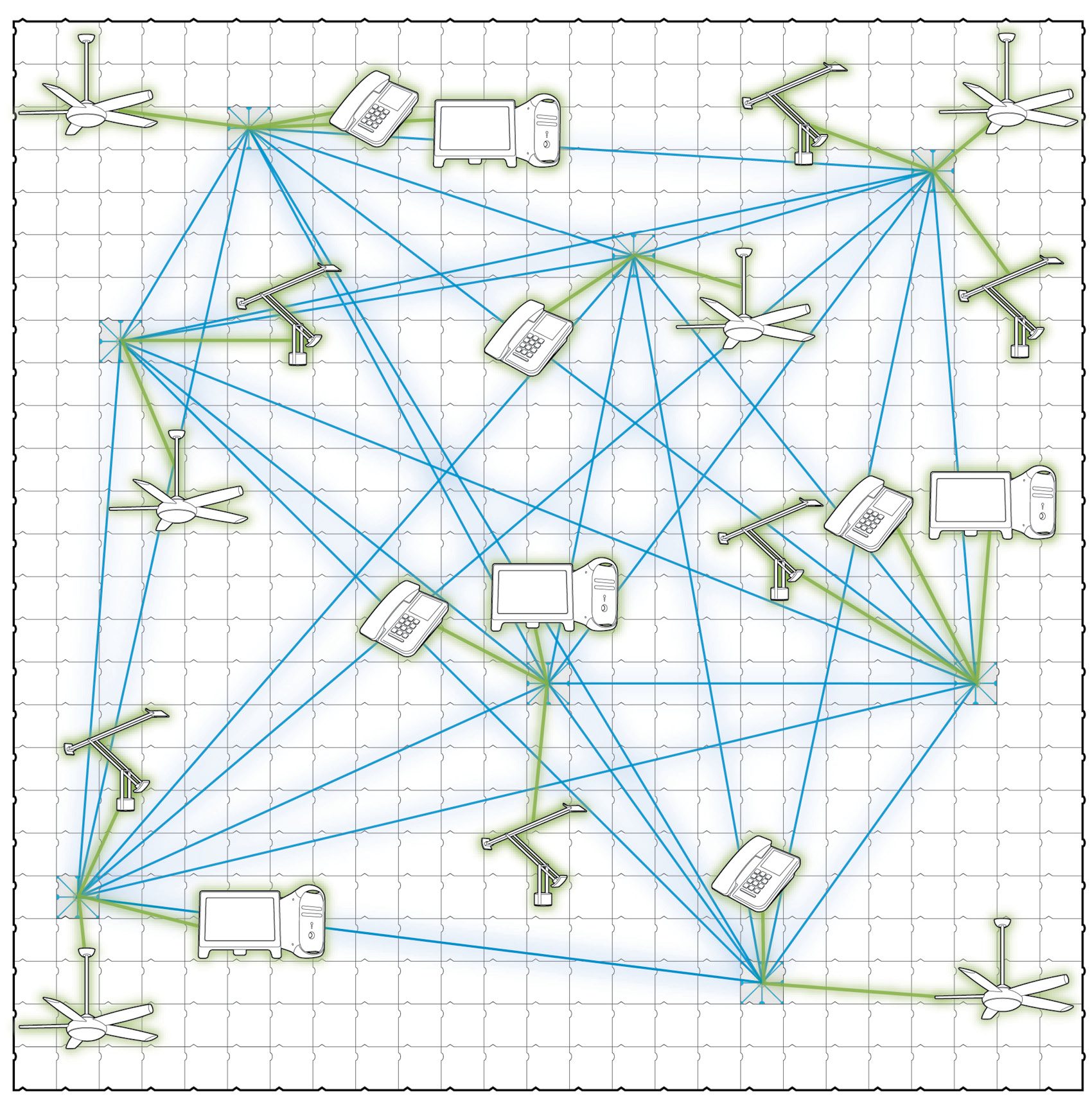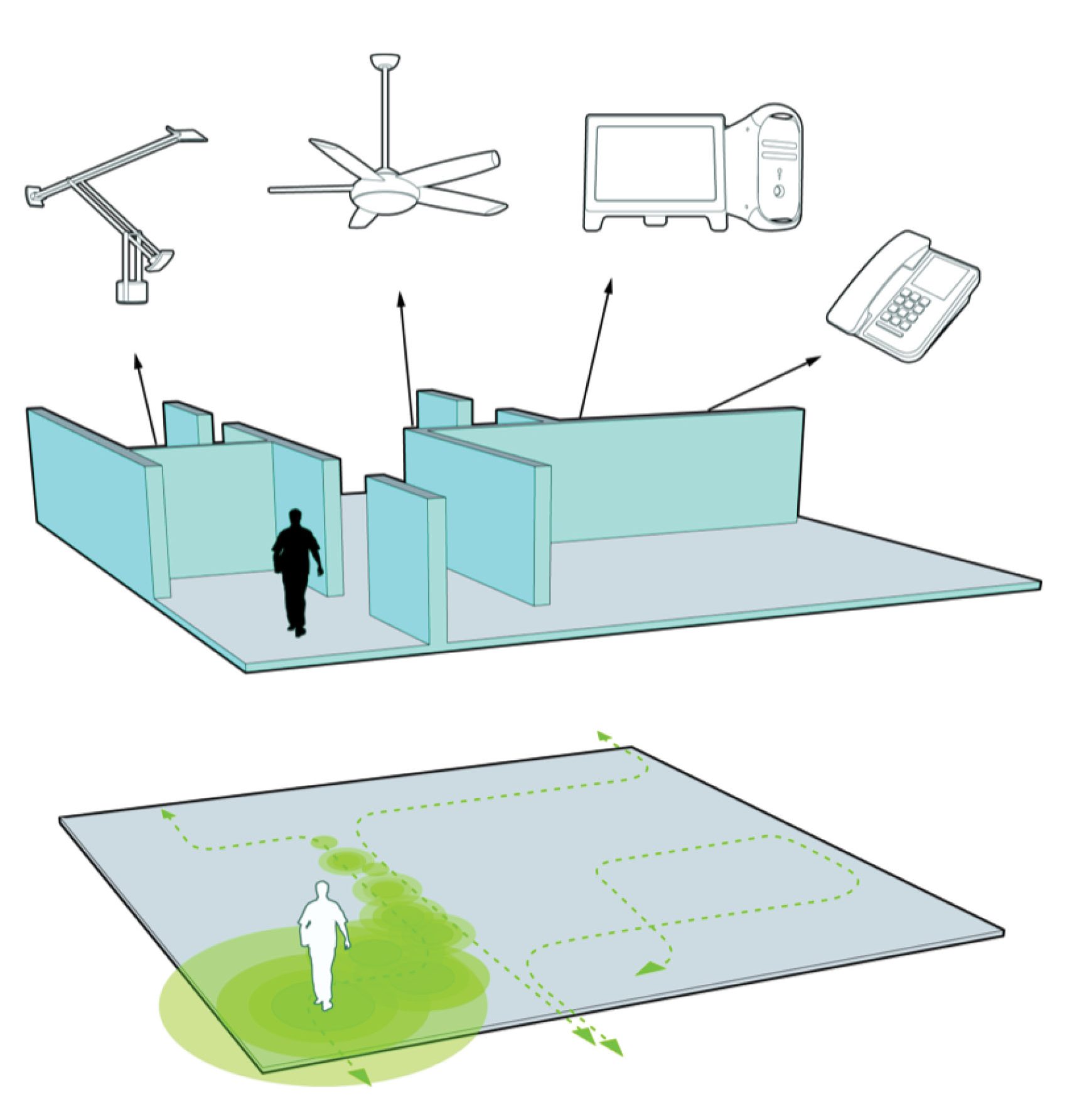[one_half]
3D DESIGN & INSIGHT
SynapTek Surface
This self-powered product conserves energy by learning about the habits of its users.
[supsystic-social-sharing id='1']
[/one_half]
[one_half_last]
The SynapTek Surface transforms a building into an intelligent organism. It is a physical interface between office space users and the technology that surrounds them (environmental systems, lighting systems, information technology systems). This self-powered product conserves energy by learning about the habits of its users. For example, what if your office was able to learn that:
- You usually don’t power up the computer until 1/2 hour after you’re in the office…
- Your preference for lighting is low except when there are more than two people in your space...
- You’ve left for the day and everything should be powered down…
- There is an emergency in your building. The SynapTek floor tells you which exit route to use…
By linking a sophisticated pressure activated sensor surface with software 'intelligence' the SynapTek Surface allows a building to become aware of its inhabitants. By merely walking across the floor the 'user' of a room communicates with the system. It ‘feels’ a user’s steps and converts them into pattern data. By linking this data with the data from a building’s systems the SynapTek Surface collects knowledge about users’ habits. Over time, the system recognizes patterns of activity, and can anticipate the needs of its users.
As an employee walks through the work space, the floor system would sense their presence, through electrical signals being generated by their footsteps, and start turning on necessary electrical systems, computer, lighting and even environmental systems. Upon departure, the system would recognize that these technologies are not needed and, based on knowledge about the user, would initiate a 'shut down' sequence. Spaces that are rarely used (e.g. storage rooms) are cut off from power hungry systems until entered. Spaces of fluctuating use (e.g. the photocopier room) are supplied resources based upon public use patterns. Areas of consistent use are supplied resources based on prior use patterns to maximize comfort while minimizing waste.
For more information, please contact Gary Abric.
[/one_half_last]





No Comments.